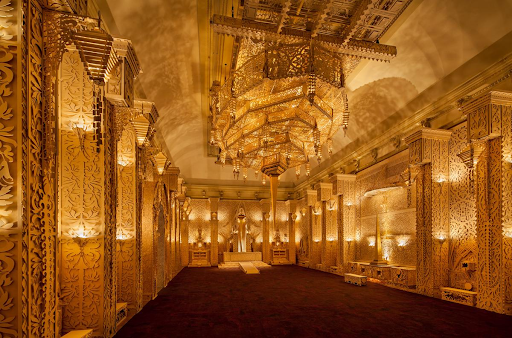
David Best, Temple, 2018
David Best’s Temple
Exhibition Review
Born in 1945, David Best is a popular contemporary artist who is best known for his intricate sacred wooden temples that are set alight at the Burning Man festivals annually in Nevada.
His current exhibition at the Renwick Gallery in the District of Columbia, is designed entirely out of recycled wood sheets and is dedicated to the public as a place to pay your respects to lost loved ones.
Best attended the San Francisco Art Institution where he received a Master’s degree in sculpture. He tends to make his art from recycled materials including car parts, discarded wood and miscellaneous items salvaged from dumpsters. In addition to the wooden temples, Best also creates ceramic sculptures and art collages.
Best first began creating Burning Man Temples in 2000; they are unaffiliated with any religion and are intended to be a sacred place of peace to grieve for those who have passed. The Temple Crew creates these giant delicate buildings and opens them to the public to write their troubles inside. Often times the construction of the Temple is extended to local citizens to include them in the project. The temples are most often created in places that have suffered massive grief such as Parkland, Florida, where a school shooting occurred.
The temple on display at the is located on the second floor of the building at the top of a red carpeted staircase. Directly across from the entrance is a statue of a naked figure and surrounding it are other contemporary pieces made out of glass. The wooden temple is a strict contrast to everything else in the museum in its size and material, yet it is as delicate as the glass pieces of Ginny Ruffner’s Reforestation of the Imagination exhibit.
Upon entering the sacred temple you immediately notice the smell of wood in the large space; there is intricate wood detailed from floor to ceiling spanning the room on three of its four sides. Sconces line the walls to provide a dim calming light.
The high ceiling also features a large drop down wooden designed piece that provides more soft lighting. The silence is so deafening that it increases your awareness of the space and magnifies any sound that is made.
The temple has wooden columns along the two sides and a larger shrine area in the middle of the far wall, these protrusions in the space make the room feel smaller than what it actually is yet they increase design space. The smaller the space feels, the closer to the artwork visitors feel, especially when standing in the alcoves between the columns.
Best aims to include the public in all of his work in any way he can, viewers are encouraged to write thoughts along the walls or on wooden chips that are then placed wherever you choose in the temple; benches line the walls welcoming you to take a seat and reflect. The temple is now apart of you as much as you are apart of the temple.
David Best
Temple 2018
Recycled wood
Ms. Voeghtly visited this exhibit with Professor Eric Kniss’ class Perspectives of Contemporary Art.
